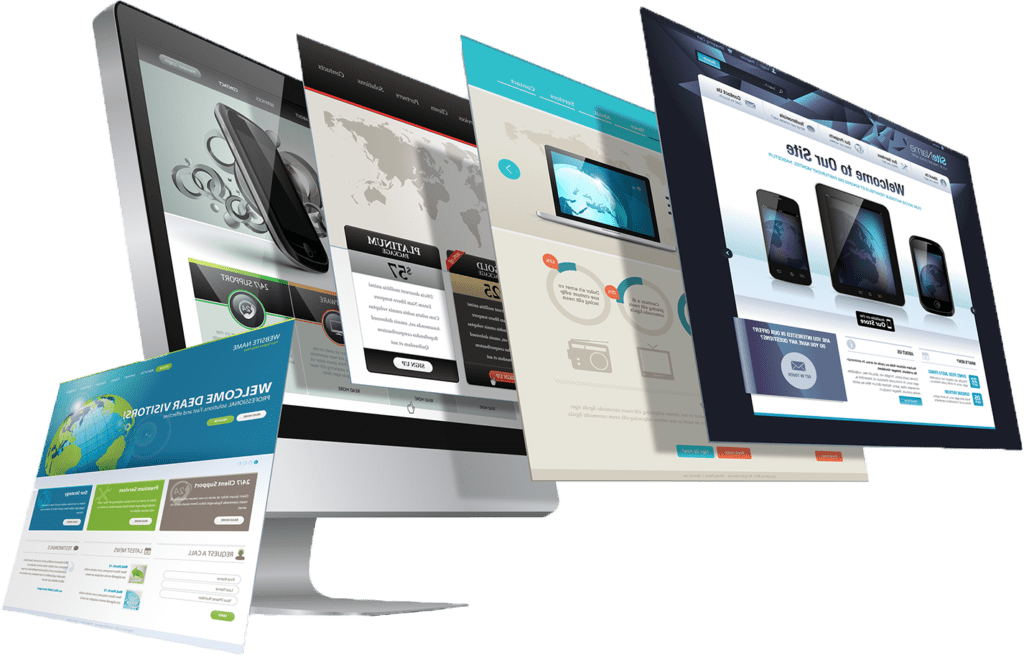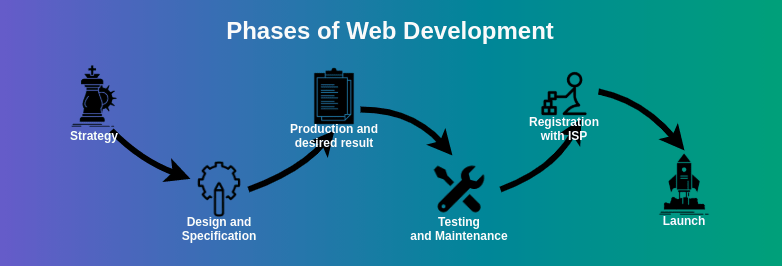Table of Contents
In the digital age, a well-designed and functional website is crucial for businesses and individuals alike. It serves as the virtual storefront, the first point of contact for potential customers, and a representation of your brand identity. In this article, we’ll delve into the intricacies of website design and development, exploring its importance, the user experience, and the steps involved in creating a successful website.
In today’s digital age, a well-designed and functional website is more than just a virtual storefront—it’s a powerful tool for establishing your online presence, attracting visitors, and driving business growth. Whether you’re a business owner, entrepreneur, or individual looking to showcase your talents, understanding the ins and outs of website design and development is essential. In this article, we’ll explore the fundamental principles of creating a successful website, from planning and design to development and launch. Join us as we delve into the world of website design and development and learn how to craft your digital identity effectively.
Importance of Website Design and Development
Your website is often the first impression people have of your business. It’s where they learn about your products, services, and values. A professionally designed and developed website not only attracts visitors but also keeps them engaged and encourages them to take action, whether it’s making a purchase, signing up for a newsletter, or contacting you for more information.
In today’s digital age, the importance of website design and development cannot be overstated. A well-crafted website serves as the virtual storefront for businesses, conveying brand identity, engaging visitors, and driving conversions. Investing in quality design and development is essential for establishing credibility, enhancing user experience, and achieving online success.

Understanding User Experience
User experience (UX) plays a crucial role in the success of your website. It encompasses everything from navigation and layout to content and interactivity. A positive user experience ensures that visitors can find what they’re looking for quickly and easily, leading to higher engagement and conversion rates.
User experience (UX) refers to the overall experience that users have when interacting with a website, application, or digital product. It encompasses various aspects, including usability, accessibility, functionality, and satisfaction. A positive user experience is crucial for engaging visitors, driving conversions, and building long-term relationships with customers. By prioritizing user experience, businesses can create intuitive, enjoyable, and meaningful interactions that resonate with their audience and contribute to overall success.
Planning Your Website
Before diving into design and development, it’s essential to plan your website thoroughly. Identify your target audience, define your goals, and outline the features and functionality you want to include. Conducting market research and competitor analysis can help you gather insights and make informed decisions about your website’s design and content.
Before diving into the design and development process, it’s essential to create a comprehensive plan for your website. This involves defining your goals, identifying your target audience, and outlining the features and functionality you want to include. By taking the time to plan your website thoroughly, you can ensure that it effectively meets the needs of your audience and aligns with your business objectives.

Designing Your Website
Once you have a clear plan in place, it’s time to bring your vision to life through design. Focus on creating a visually appealing layout that reflects your brand identity and communicates your message effectively. Pay attention to factors such as color scheme, typography, and imagery to create a cohesive and engaging design.
Designing your website is a crucial step in the website development process. It involves creating the visual elements and layout that will define the look and feel of your site. From choosing color schemes and typography to designing user interfaces and navigation menus, every aspect of your website’s design should be carefully considered to create a cohesive and engaging user experience. By focusing on aesthetics, usability, and brand consistency, you can create a website that captivates visitors and effectively communicates your message.
Development Phase
With the design finalized, the development phase begins. This involves turning the design mockups into a fully functional website using coding languages such as HTML, CSS, and JavaScript. Collaborate with developers to ensure that the website is responsive, optimized for speed, and compatible across different devices and browsers.
The development phase of website creation involves turning the design concepts into a fully functional website. This phase typically includes writing code, building database structures, and integrating various components such as forms, databases, and content management systems. Developers work closely with designers to ensure that the website’s functionality aligns with the design specifications and meets the needs of the target audience. Attention is also given to factors such as responsiveness, speed, and security to ensure optimal performance across all devices and browsers.

Testing and Quality Assurance
Before launching your website, it’s essential to thoroughly test it for functionality, usability, and performance. Conduct usability testing with real users to identify any issues or areas for improvement. Additionally, perform quality assurance checks to ensure that all links work correctly, forms submit properly, and content displays accurately.
Once the development phase is complete, the website undergoes rigorous testing and quality assurance to ensure that it functions correctly and meets the desired standards. This process involves identifying and fixing any bugs, errors, or inconsistencies that may arise during development. Testing may include functionality testing, usability testing, performance testing, compatibility testing, and security testing. By conducting thorough testing and quality assurance, developers can ensure that the website performs as expected, delivers a seamless user experience, and meets the needs of its intended audience.
Launching Your Website
With testing complete and any necessary adjustments made, it’s time to launch your website. Choose a reliable hosting provider, set up your domain name, and deploy your website to the server. Announce the launch to your audience through social media, email newsletters, and other marketing channels to generate excitement and drive traffic to your site.
The launch phase is an exciting milestone in the website development process, marking the moment when your website goes live and becomes accessible to the public. Before launching, it’s essential to ensure that all aspects of the website, including design, functionality, and content, are thoroughly tested and optimized for performance. Once everything is ready, you can deploy your website to the server, configure your domain name, and make any final adjustments as needed. Finally, announce the launch to your audience through various channels, such as social media, email newsletters, and press releases, to generate excitement and drive traffic to your site.
Post-launch Maintenance
Launching your website is just the beginning. To ensure its continued success, regular maintenance is essential. Monitor performance metrics such as traffic, engagement, and conversion rates, and make updates as needed to keep your website fresh and relevant. Regularly update content, fix any bugs or issues that arise, and stay informed about new trends and technologies in website design and development.
After your website is launched, it’s important to continue to maintain and update it to ensure optimal performance and user experience. Post-launch maintenance involves regularly monitoring your website for issues, updating content, fixing bugs, and implementing security patches. Additionally, you may need to make updates to reflect changes in your business, such as new products or services. By staying proactive with your website maintenance, you can ensure that your site remains secure, up-to-date, and continues to meet the needs of your audience.
Conclusion
Website design and development are critical components of building a successful online presence. By prioritizing user experience, planning carefully, and investing in quality design and development, you can create a website that attracts visitors, engages them effectively, and drives results for your business or personal brand.
website design and development are essential components of creating a successful online presence. By carefully planning, designing, and developing your website, you can create a digital platform that effectively communicates your brand message, engages your audience, and drives business growth. However, the journey doesn’t end with the launch of your website. Continuous maintenance and updates are necessary to ensure that your site remains relevant, secure, and user-friendly over time. By investing in website design and development and prioritizing ongoing maintenance, you can establish a strong online presence and achieve your business goals in the digital landscape.



Leave a Reply